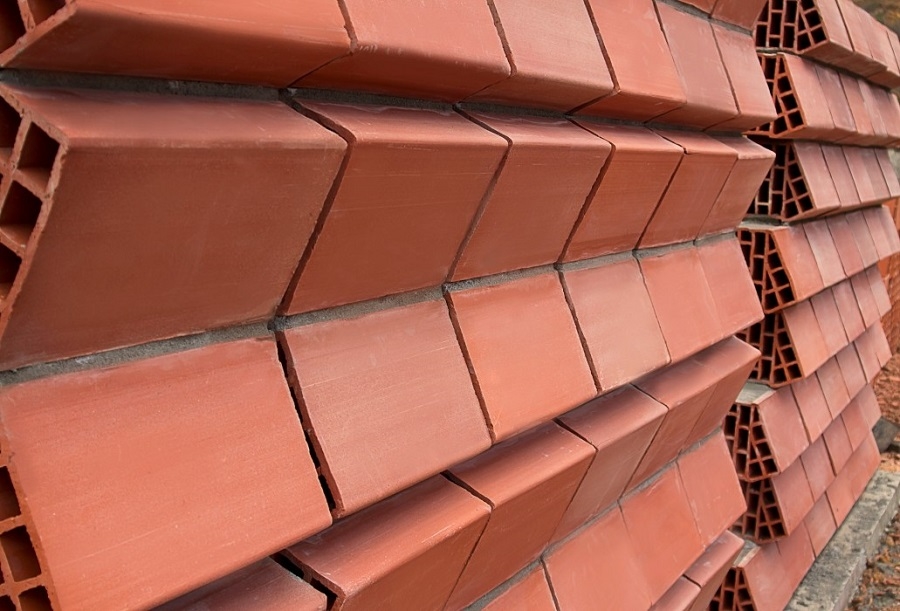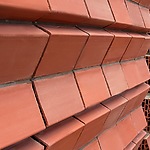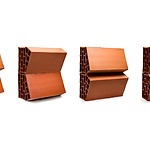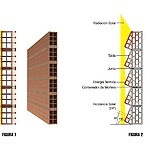As technology of materials improves, new possibilities arise in the field of building façade design. Sustainability, adaptability to the environment, saving energy techniques, as well as aesthetics and design methods are some of the fields being improved and benefited. Nevertheless, we’re moving one brick at a time towards a more earth friendly building future, and researchers Miguel Niño and Johanna Navarro in Colombia have just thrown their latest invention into the equation. Bloque Termodisipador BT, their most famous solution, is nothing but a ceramic block designed with an irregular cross section that allows ventilation to pass through the brick, reducing the amount of heat that enters the interior of the building.
Considering that a façade has the biggest surface share of a building, it also holds the biggest potential in gain and loss of energy and comfort. As the interface between interior space and exterior environment, a building’s skin plays a crucial role in heat and light exchange and it affects occupant comfort and productivity, energy use and running costs. While living conditions have changed remarkably over the last decades, some building materials have stayed the same as they have always been.
For the architects Miguel Niño and Johanna Navarrothe traditional clay brick was the starting point of a vast research aiming in providing new solutions to four shortcomings currently present in construction in Colombia:
- Reduce thermal discomfort while minimizing the use of climate control devices.
- Introduce new sustainable energy solutions in construction.
- Decrease the amount of installation materials, finishes and construction time.
- Promote the traditional industry of clay industry.
Briefly described, BT - Bloque Termodisipador is a “ceramic brick for the construction of architectural enclosures and facades, which adopts the same manufacturing process of the traditional fired clay brick, with an innovation in the design of the cross section used in the extrusion process. Its unusual shape, made up of a rectangle and an irregular scalene triangle, partially protects the brick from solar radiation and the transfer of heat. The separation between the blocks, combined with the channels that make up the irregular scalene triangles, allows ventilation to pass through the bricks, quickly dissipating the stored heat and reducing the amount of thermal energy emitted into the interior of the building. The scalene triangle has a 114° angle on its exterior, the opposite angle of solar radiation during maximum sun exposure (24°). Its irregular shape allows for countless three-dimensional aesthetic compositions that also deflect sound, reducing the amount of noise entering the interior. A space on the top of the block is made to hold the mortar, making it so the mortar level is almost the same for each brick, avoiding wasted materials and placement errors”.
Comparing tradition clay bricks with BT-Bloque Thermodisipador gives us some interesting conclusions towards the sustainable advantages of using this new type of brick. First of all, while the traditional fired clay bricks, used for facades, cause the entire wall to be exposed to solar radiation for long periods of time because of their rectangular shape, BT - Bloque Termodisipador’s unique shape, partially protects the wall from solar radiation and the transfer of thermal energy. Moreover, the channels that make up the irregular triangle allow ventilation to pass through them, quickly dissipating the temperature of the brick, and reducing the amount of heat transmitted inside.
In addition to that, traditional fired clay bricks often act as thermal bridges that conduct the heat to the inside with great speed, due to their horizontal surfaces. As it can be seen, the horizontal surfaces of the BT - Bloque Termodisipador are interrupted by a series of smaller sub-channels, making it so the path of the heat is longer, and slowing and reducing its entrance inside. Furthermore, the finishing process becomes much easier and cheap. Instead of the common various stages (plaster, stucco, paint, or coating etc.), the BT - Bloque Termodisipadorgives itself a natural finish characterized by the tones that the clay offers, allowing us to leave the facade showing.
For more information on this new material and its implementations visit Sumart Diseño y Arquitectura’s site: http://valoralespacio.wix.com/sumart
References
http://www.archdaily.com/778158/in-detail-heat-dispersing-brick-developed-in-colombia



